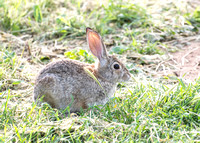The goal of this sampling event was to document invertebrate diversity on the Ranch. While a lot of work has been conducted researching other biological and ecological aspects to the property, very little is known about invertebrate communities on Tejon. This is the 5th official trip partnering with the Lorquin Society and Tejon Ranch Conservacy to observe and document invertebrates on Tejon.
We sampled the lower elevations of the San Joaquin Valley—this included really unique alkali springs and shrublands, grasslands with wildflowers and rare plants, riparian woodlands, and some vernal pools.
Date Locality Latitude Longitude Elevation (comments) Approx. Time
Sebastian Camp 35.03662 -118.76975 345 (home base)
30-Mar Sheep Trail Spring 35.15083 -118.78751 200 (bull and rattlesnake) 1-3pm
30-Mar Sycamore Creek, Arvin Granite Mine: 35.19931 -118.76205 179 (Lupine field) 3:45-5pm
30-Mar White Wolf South Pasture 35.26401 -118.72691 295 (Poppy and Fiddleneck field) 5:30-7pm
31-Mar- Lower Tejon Creek, below Tejon Gorge 35.07528 -118.76673 289 (1st stream area) 9-11:15am
31-Mar Lower Tejon Creek Wetland 35.08805 -118.80461 241 (deep stream to cross) 11:45am-1:30pm
31-Mar Amarga Spring 35.1370116 -118.8246403 (Alkalai near orange grove) 2-3:20pm
31-Mar Comanche Spring and Comanche Creek Wetland 35.1352 -118.81174 166 (Very birdy area, sulfur pool) 3:40-5:15pm
1-Apr Joaquin Flats 35.02277 -118.67889 885 (vernal pools)
1-Apr Indian Schoolhouse, Tejon Creek 35.04512 -118.67052 647
Our group observations on iNaturalist
We sampled the lower elevations of the San Joaquin Valley—this included really unique alkali springs and shrublands, grasslands with wildflowers and rare plants, riparian woodlands, and some vernal pools.
Date Locality Latitude Longitude Elevation (comments) Approx. Time
Sebastian Camp 35.03662 -118.76975 345 (home base)
30-Mar Sheep Trail Spring 35.15083 -118.78751 200 (bull and rattlesnake) 1-3pm
30-Mar Sycamore Creek, Arvin Granite Mine: 35.19931 -118.76205 179 (Lupine field) 3:45-5pm
30-Mar White Wolf South Pasture 35.26401 -118.72691 295 (Poppy and Fiddleneck field) 5:30-7pm
31-Mar- Lower Tejon Creek, below Tejon Gorge 35.07528 -118.76673 289 (1st stream area) 9-11:15am
31-Mar Lower Tejon Creek Wetland 35.08805 -118.80461 241 (deep stream to cross) 11:45am-1:30pm
31-Mar Amarga Spring 35.1370116 -118.8246403 (Alkalai near orange grove) 2-3:20pm
31-Mar Comanche Spring and Comanche Creek Wetland 35.1352 -118.81174 166 (Very birdy area, sulfur pool) 3:40-5:15pm
1-Apr Joaquin Flats 35.02277 -118.67889 885 (vernal pools)
1-Apr Indian Schoolhouse, Tejon Creek 35.04512 -118.67052 647
Our group observations on iNaturalist
Landscapes, Habitat, and working in the Field
90 photos

Invertebrates
128 photos

Vertebrates
41 photos

All images © Kim Moore (contact for use)